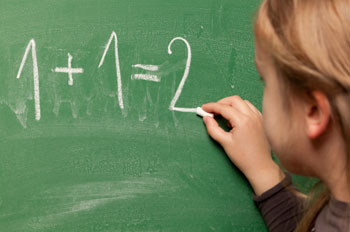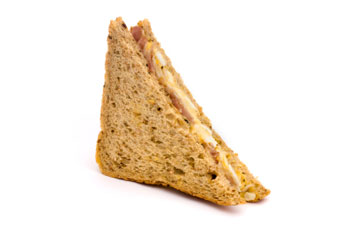6th Grade Geometry Lessons and Teaching Strategies
In 6th grade, students generally solve math and real-world problems that concern area, surface area and volume. Keep reading if you're looking for tips on what to teach and how to teach it.

Guide for Teaching Geometry to 6th Graders
What to Cover
Although each state has its own curriculum standards and learning goals, in 6th grade geometry, students will:
- Compose and decompose triangles, certain quadrilaterals and other polygons into other shapes.
- Finding the volume of a right rectangular prism using the formulas V = lwh and V = bh.
- When given coordinates for the vertices, students use a coordinate plane to draw polygons, find length of a side that joins points with the same first or second coordinate.
- Use nets composed of triangles and rectangles to symbolize 3-dimensional figures and to determine the figures' surface areas.
Teaching Strategies
Your 6th graders need to learn certain facts and procedures to meet those goals. Strategies for teach each goal are provided below.
Area of a Triangle
Graph paper or geoboards can help 6th graders visualize how to break shapes apart. For instance, to find the area of a right triangle, you can divide the area of a rectangle by two.
Continue practicing by dividing other triangles into two right triangles. Find the areas for each right triangle and add them together. Then, take the same triangle and use the formula A = ½(b)(h) to show that this gives the same answer. For other geometric shapes, divide (decompose) them into triangles and rectangles to compute the area.
Unit Cubes
Sixth graders have already learned to determine the area of a rectangle using cubes that equal one. By using cubes that are smaller than one (e.g., ½ of a unit), they begin applying their knowledge of fractions to determine the area of a rectangle.
Coordinates
Students can enjoy working with coordinates by exploring dot-to-dot pictures on a graph, where the dots are placed using coordinates. They can then go on to determine the areas of either a whole picture or just certain portions of a complex picture.
Nets
Give students a net and guide them in making the polyhedron from it. Alternatively, provide the students with a polyhedron and ask them to draw a net for it. Either way, students will learn to find the triangles and rectangles that form the polyhedron and find the area of each. By adding them together, they'll discover the surface area of the shape.
Other Articles You May Be Interested In
-
Not Your Father's Algebra As 45 States Look to Math Reform

One plus one will always equal two...but just how students are taught math is going to change. Nearly every state in the country has adopted the Common Core Standards; for math, this means new and more in-depth approaches to teaching the subject. Have we seen the last of traditional algebra and geometry classes?
-
The Pythagorean Theorem: Almost As Easy As ABC

One of the most useful and widely used rules in mathematics is the Pythagorean theorem. Your child's mastery of this theorem is critical to success in geometry. One helpful method for understanding and remembering a rule like the Pythagorean theorem is to fully explore its meaning and history.
We Found 7 Tutors You Might Be Interested In
Huntington Learning

- What Huntington Learning offers:
- Online and in-center tutoring
- One on one tutoring
- Every Huntington tutor is certified and trained extensively on the most effective teaching methods
K12

- What K12 offers:
- Online tutoring
- Has a strong and effective partnership with public and private schools
- AdvancED-accredited corporation meeting the highest standards of educational management
Kaplan Kids

- What Kaplan Kids offers:
- Online tutoring
- Customized learning plans
- Real-Time Progress Reports track your child's progress
Kumon

- What Kumon offers:
- In-center tutoring
- Individualized programs for your child
- Helps your child develop the skills and study habits needed to improve their academic performance
Sylvan Learning

- What Sylvan Learning offers:
- Online and in-center tutoring
- Sylvan tutors are certified teachers who provide personalized instruction
- Regular assessment and progress reports
Tutor Doctor

- What Tutor Doctor offers:
- In-Home tutoring
- One on one attention by the tutor
- Develops personlized programs by working with your child's existing homework
TutorVista

- What TutorVista offers:
- Online tutoring
- Student works one-on-one with a professional tutor
- Using the virtual whiteboard workspace to share problems, solutions and explanations